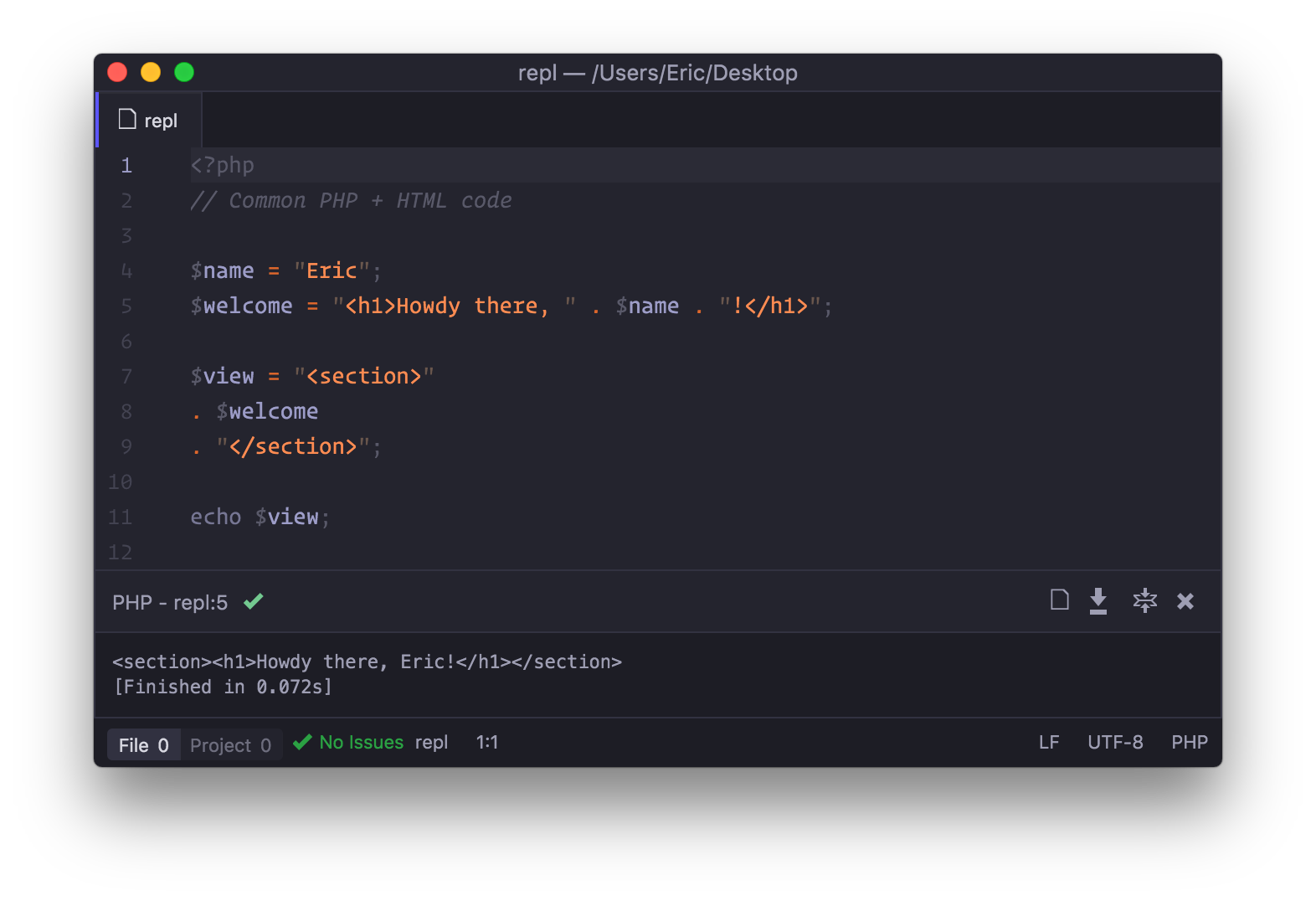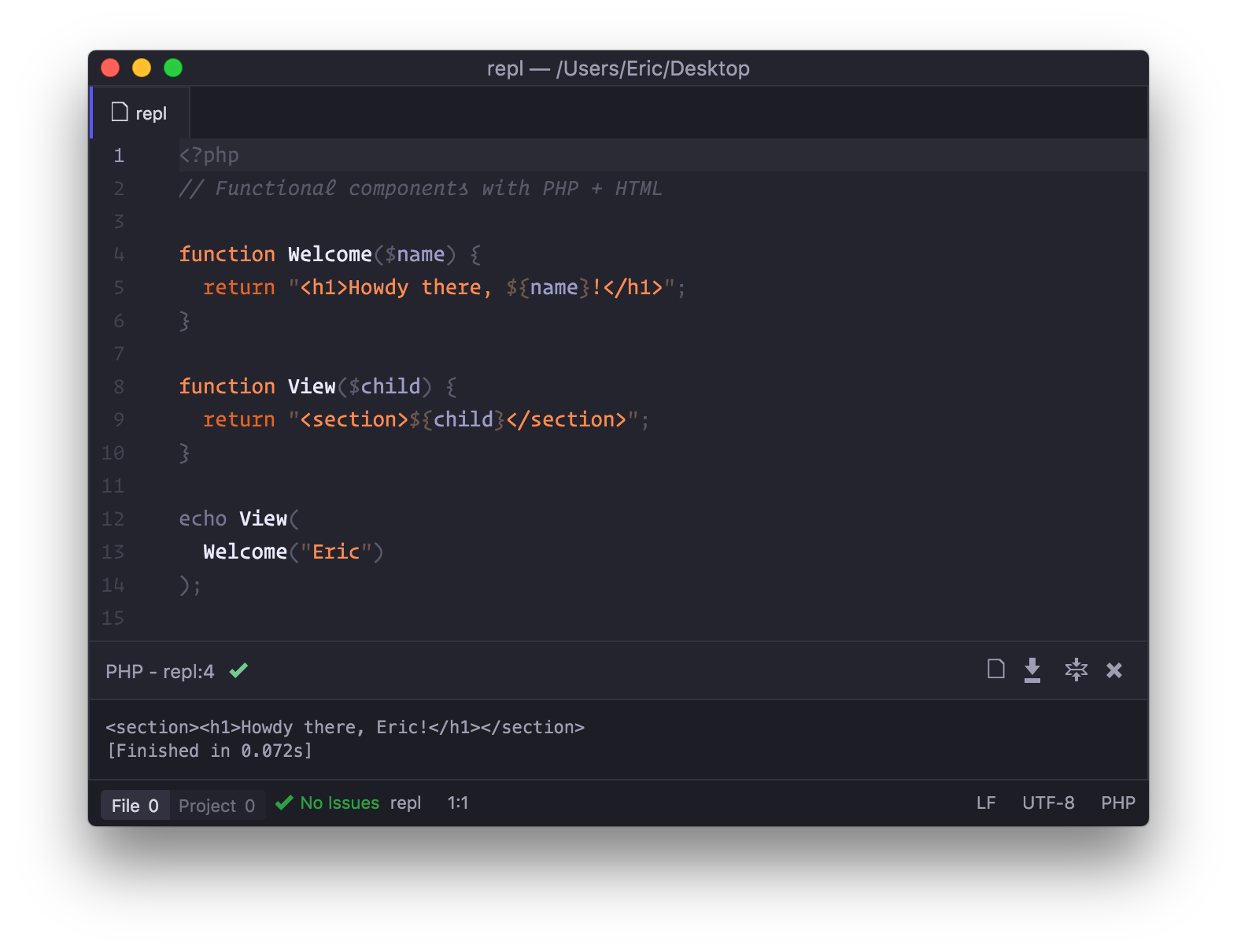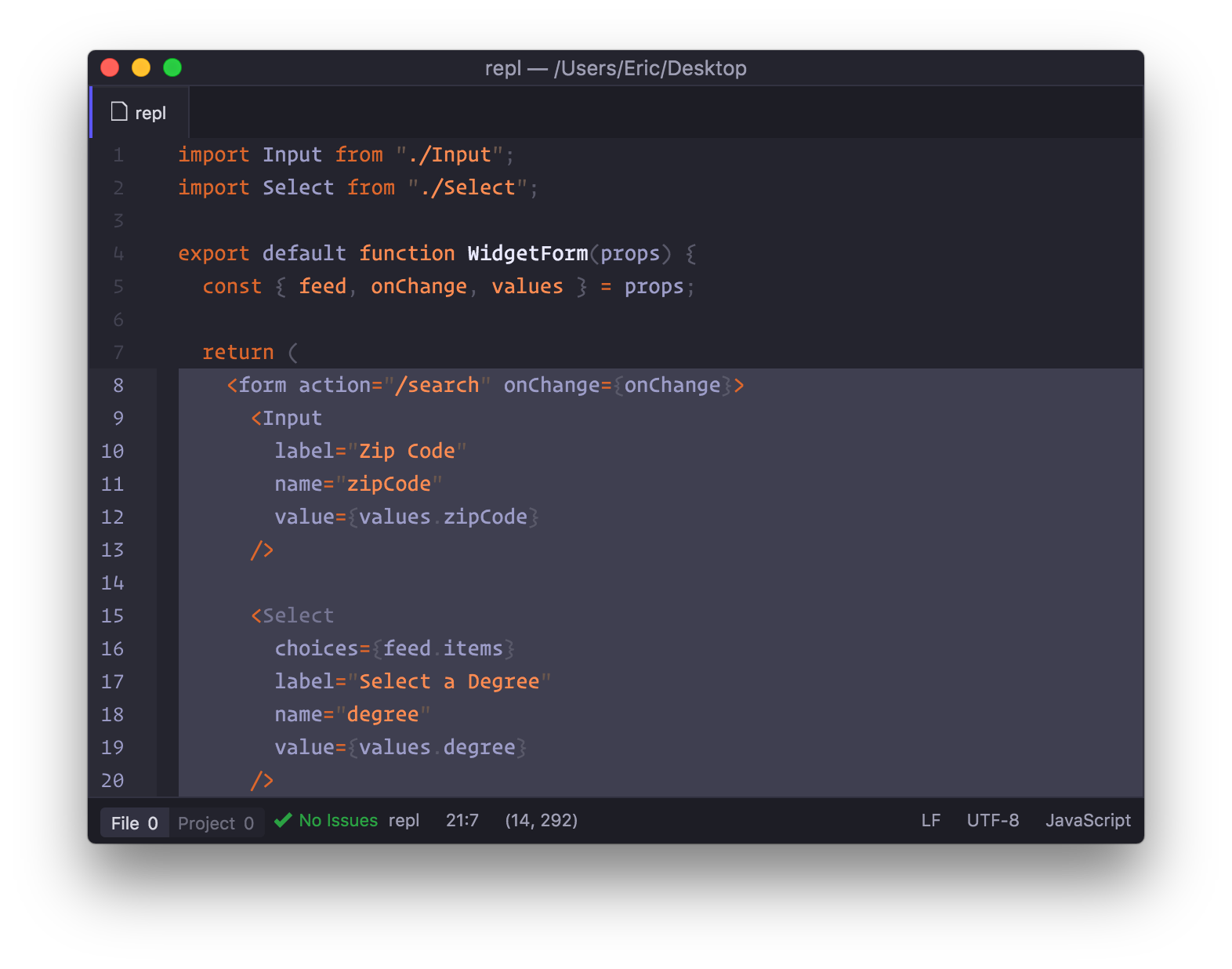Teaching React Without Using React
Over a month ago, our remote team of front-end developers visited our Houston office for meetings, social outings, and knowledge sharing.
This team typically works on WordPress sites using PHP, HTML, SASS/LESS/CSS, I wanted to introduce them to React, as it’s been the foundation of our major applications for 2 years.
You may have noticed that our team designations of “front-end” and “backend” are less & less sense fitting nowadays. “Front-end” is typically responsible for authoring & theming, while “backend” work on full-stack business applications.
The first question I asked myself was:
“How should I teach React to PHP developers?”
-
Do I show them create-react-app? No.
-
Webpack? No.
-
Babel? No.
-
Inline styles? Heck no.
What makes React important is the shift from global, template-based layouts to distinct, data-driven components.
Thinking in “Components”

For us, the cleanest PHP + WordPress themes still rely on a great deal of templates abstracted into partials, custom PHP functions for lifecycle hooks, and custom JavaScript/Styling that’s stored, compiled, & bundled separately from the partials that need them.
A direct byproduct of this is the CSS variable & selector bloat that’s impossible to stave off due to CSS cascading risk as well as styles. (Over-bundling of JavaScript is common, too.)

The first step was to show that templates are visually clearer when markup is grouped, rather than concatenated across several logic blocks.

Next, it’s clear that components can exist in PHP in a way that’s WordPress-agnostic and visually similar their JavaScript equivalent.
This simplifies the conversion of static content into rich, dynamic content.

As evident here, converting PHP into JavaScript was deceptively easy.
A Practical Example
Working at HigherEducation.com, a very common scenario is for a user to search for online programs in their area:

Using this scenario & our preceding examples of functional components, it’s a cinch to draw the lines of abstraction & convert standard HTML into components:

We can continue abstracting away markup into components until we strike a balance between terseness and flexibility:

Components can abstract away as little or as much as you like.
Where you draw the line is very much up to you and where you drawn the line of abstraction & maintainability.
A Functioning Widget in Vanilla JavaScript
Now that we’re thinking in components, the next logical step was to make our form dynamic by tracking application state in a plain JavaScript object.

Our render function completely destroys the DOM and re-renders our view to drive home the point that the view is a result of our state.
(To help round out the example, we’re making an AJAX request for the data after our initial render.)

Even further, the Widget component shows a loading indicator until a data feed is provided.
(For this demo, the component also renders the state object as a string into the DOM. This way, as the user interacts with the Widget and the view re-renders, the state is visibly the cause of the change.)

With each component, we can clearly see how data is passed around and what each component’s expectations are.
Using template literals in JavaScript, it’s easy to forget that these are plain strings. Instead, you start seeing functionality.

The Functioning Widget in React & JSX
Lastly, the React (JSX) version is merely a syntax change to the components & using react-dom to render.
The only React-specific change to our benefit is being able to supply a custom onChange to the form, rather than attaching an event listener to the document.body.

Well-designed components shouldn’t need a massive rewrite to work with another renderer.

The selling points of React in comparison to the Vanilla Widget were:
-
Virtual DOM. Updating the DOM vs. destructively removing it maintains tab indexes, focus, and other expectations of static markup.
-
Normalized Events. It’s easy to forget about this, but standardized events greatly simplify that last round of QA when you’re trying to figure out why your app doesn’t work in Safari (or whoever is the new Internet Explorer).
-
Lifecycle Hooks. Being able to fetch data when a specific component needs it or integrate with 3rd party scripts is an essential escape hatch.
How’d it Go?
The *Ah-hah! *moment for the group was watching the DOM get completely destroyed & faithfully re-rendered **purely **from the state.
Although, when you think about it, this is already how PHP & server-side rendering works: the request comes in, the view references the current state of the request (e.g. $_GET & $_POST), returns the output, rinse & repeat.
I’ve spoken about this very topic at Space City JS: https://github.com/ericclemmons/mvc-to-react
The key takeaway is that React has changed how we tackle building complex applications. Instead of blindly enforcing DRY or “separation of concerns”, we eagerly co-locate data, logic, & aesthetics with the components that know best so progress can be made, rather than needlessly stifled.